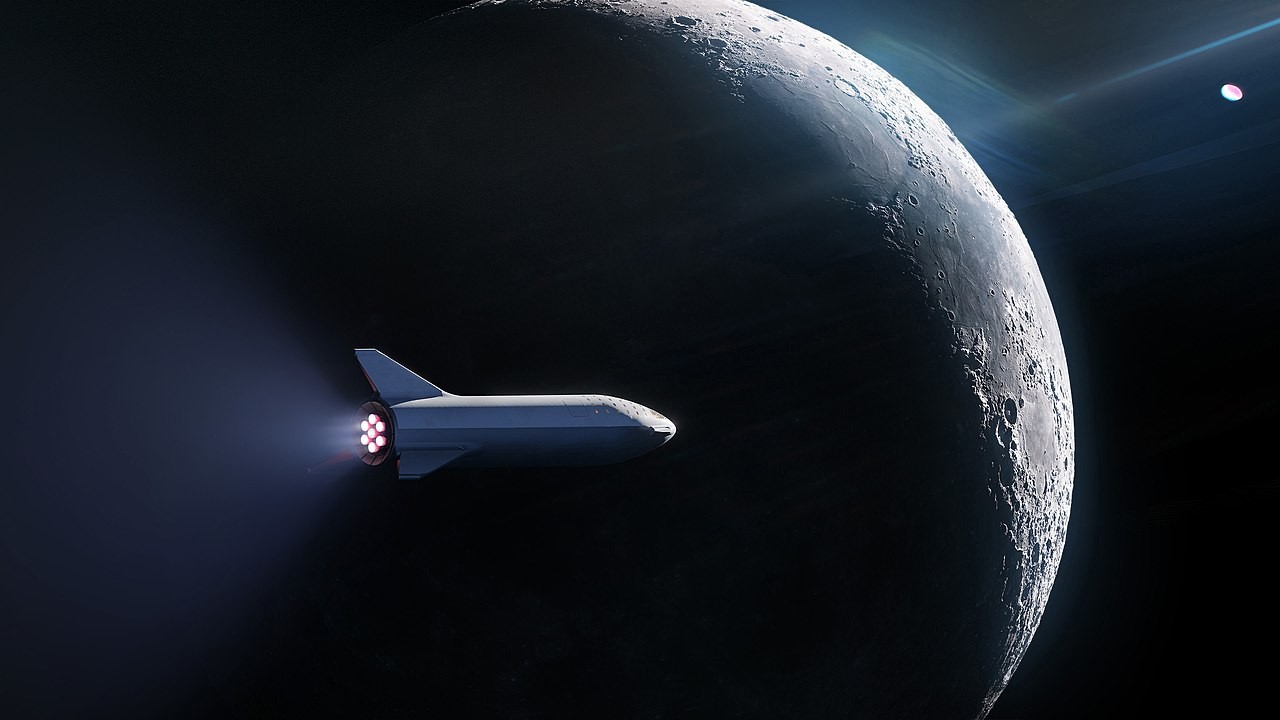SpaceX may soon launch the largest rocket in human history. If this is only a first orbital test flight, we know this interplanetary and fully reusable spacecraft designed to take astronauts to the Moon and Mars. However, Elon Musk, the boss of SpaceX, has even greater ambitions. Indeed, this spacecraft could radically change the way we explore the Solar System.
This incredible rocket being developed in Texas consists of a giant spacecraft named Starship, capped above by a large booster named Super Heavy. Both can land on Earth for reuse, dramatically reducing costs while allowing for a higher launch rate . Eventually, the entire vehicle will be capable of lifting one hundred metric tons of cargo and people into space.
In mid-November, while speaking at a virtual meeting hosted by the National Academies of Science, Engineering, and Medicine of the States States, Elon Musk discussed the scientific potential of his project. “It is extremely important that we can become a multiplanetary species as soon as possible " , did he declare. “Along the way, we could learn a lot about the nature of the universe ", because this ship will be able to carry "many scientific instruments s “, much more than is currently possible. “Imagine a hundred ton object on the surface of Europa “, he further underlined.
As said above, in addition to its lifting capacity, the Starship is also designed to be "cheap". While agencies like NASA and ESA must carefully choose a few missions to fund with ultra-limited budgets, the Starship's affordability could enable missions that otherwise wouldn't even be considered .
“Low cost of access has the potential to be a real game-changer for scientific research “, explains Andrew Westphal, of the University of California at Berkeley, highlighting flights under two million dollars. “You can then imagine privately funded missions and consortia of citizens coming together to make things fly “.

With all this potential in mind, scientists are already beginning to imagine what the Starship could offer us. Earlier this year, a paper published by Jennifer Heldmann of NASA Ames Research Center explored some of these scientific opportunities.
One of the big advantages would be the no need to systematically miniaturize the instruments . For example, "you could deliver a big drilling rig “, explains Heldmann. "You could then dig for nearly a mile, like we do on Earth ". This would allow unprecedented access to the interior of the Moon and Mars and to potential resources. “Before, such an idea was a bit crazy “, emphasizes the researcher. However, with the Starship, "you can do it and still have room to spare ". And to add:“What else do you want to bring? “.
Given it will be able to return to Earth, SpaceX's Starship could also bring back large amounts of samples . Such a volume of material taken from various places could shed light on a lot of mysteries, such as the volcanic history of the Moon or the question of Martian extraterrestrial life.

Eventually, the ship could also allow for more "outlandish" missions like going to Neptune. This is the brainchild of an international group of scientists called Conex (for Conceptual Exploration Research). Neptune has indeed only been visited once (a lightning pass by the Voyager 2 spacecraft in 1989). Since then, it has been difficult to really understand this icy world and its largest moon, Triton.
These researchers then imagine a spaceship named Arcanum capable of probing this distant system. Problem:such a ship would weigh more than twenty tons, four times more than the largest space probe to date, the Cassini-Huygens mission that explored Saturn from 2004 to 2017. To date, no existing rocket could launch such a craft . The Starship would, however, be able to. In addition, the mission could also be equipped with a telescope, allowing studies of the outer Solar System and facilitating the hunt for exoplanets.
Other ideas include using Starship to send a probe into orbit around Jupiter's volcanic moon Io, which again would require substantial lifting capacity. With such a mass, we could then take on board enough fuel and radiation protection.
Other ideas are even more speculative. Philip Lubin, of the University of California, Santa Barbara, notably calculated that a sufficiently large spacecraft such as the Starship could be used to strike an asteroid threatening the Earth . Such a mission could indeed carry enough explosives to pulverize an object as large as the one responsible for the disappearance of the dinosaurs. Its fragments would then burn harmlessly in the atmosphere before they had a chance to reach our planet.

There are of course very good reasons to be cautious. Indeed, the Starship made only a few test flights, only one of which ended successfully. The Super Heavy booster has meanwhile still not taken off. And together, these two machines will form an incredibly massive and complex structure that could still encounter development problems. Also, sending a Starship to the Moon or Mars will inevitably rely on multiple resupply missions in Earth orbit, which is still untested.
Nevertheless, there really are plenty of reasons to be excited. From the inner Solar System to the outer approaches and perhaps beyond, such a vessel could well usher in a whole new era of space science.